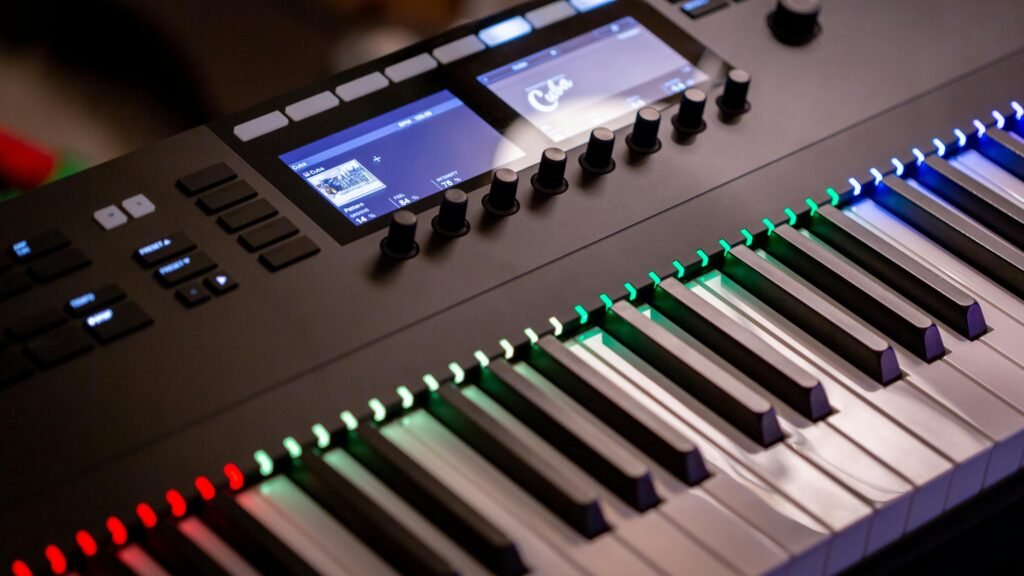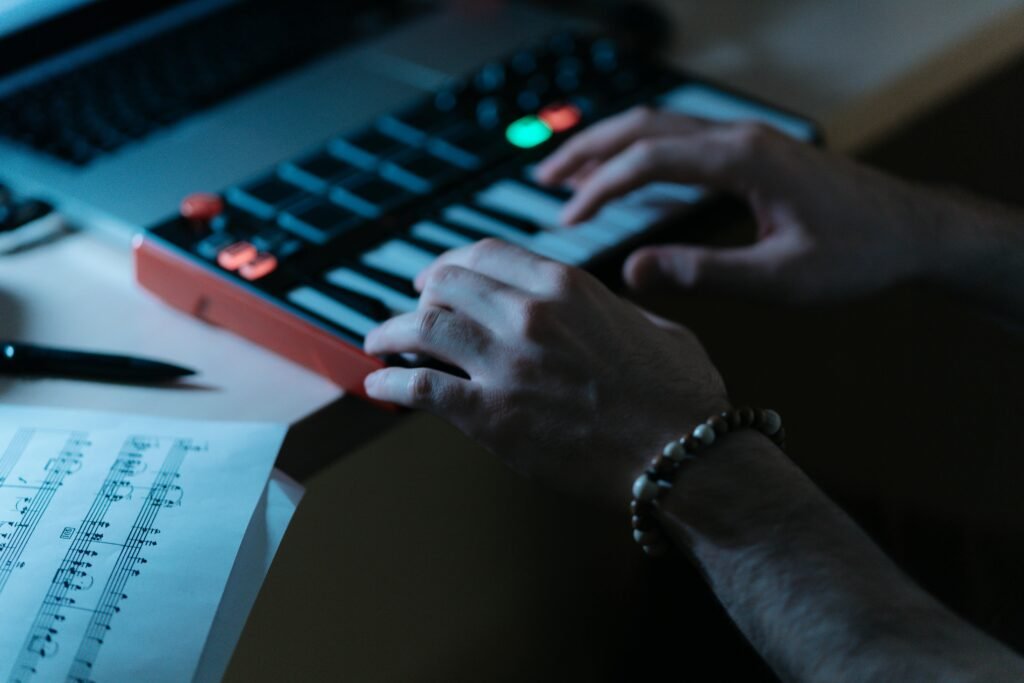Virtual synthesizers, also known as soft synths or virtual instruments, have revolutionized the way musicians and producers create, manipulate, and innovate with sound. In this comprehensive guide, I will take you on a journey through the vast and diverse world of virtual synthesizers, offering valuable insights, practical tips, and expert advice on how to select and utilize the perfect digital synth for your creative endeavors.

Understanding Virtual Synthesizers
Before we delve into the intricacies of choosing and using virtual synthesizers, it’s essential to understand what they are and how they function.
Virtual synthesizers are software-based instruments that emulate the sound synthesis capabilities of traditional hardware synthesizers. Instead of physical components and circuits, virtual synths exist entirely in the digital domain, running as plugins within digital audio workstations (DAWs) or standalone software applications. These synths typically feature oscillators, filters, envelopes, modulation sources, and effects processors, providing users with a vast array of sonic possibilities for creating and manipulating sounds.
Choosing the Right Virtual Synthesizer
With an abundance of virtual synthesizers available in the market, selecting the right one can be a daunting task. Here are some key considerations to help you make an informed decision:

1. Sound Quality and Authenticity:
When choosing a virtual synthesizer, prioritize sound quality and authenticity. Look for synths that accurately emulate the characteristics of analog hardware synths or offer unique and high-quality digital sound generation. Pay attention to factors such as oscillator waveforms, filter types, and onboard effects to ensure that the synth aligns with your sonic preferences and production goals.
2. User Interface and Workflow:
The user interface and workflow of a virtual synthesizer significantly impact your creative process. Opt for synths with intuitive interfaces and streamlined workflows that allow for seamless sound design and experimentation. Consider factors such as layout, visual feedback, and ease of navigation to find a synth that facilitates a fluid and efficient production experience.
3. Feature Set and Flexibility:
Evaluate the feature set and flexibility of the virtual synthesizer in terms of synthesis methods, modulation options, and sound sculpting capabilities. Choose synths that offer a diverse range of synthesis techniques, such as subtractive, additive, wavetable, or FM synthesis, to accommodate various musical styles and genres. Look for advanced modulation capabilities, extensive preset libraries, and customizable parameters to unleash your creativity and push sonic boundaries.
4. Compatibility and Integration:
Ensure that the virtual synthesizer is compatible with your existing music production setup. Check for compatibility with your preferred DAW, operating system, and plugin format (VST, AU, AAX, etc.). Consider whether the synth supports features such as MIDI Learn, NKS compatibility, and multi-core processing for seamless integration and efficient workflow.
5. Community and Support:
Consider the community and support ecosystem surrounding the virtual synthesizer. Look for synths that have active user communities, online forums, tutorial resources, and responsive customer support channels. A vibrant community and reliable support network can provide valuable assistance, inspiration, and troubleshooting help as you explore and master the capabilities of the synth.
Popular Virtual Synthesizers
Let’s explore some popular virtual synthesizers that have earned acclaim and recognition in the music production industry:
1. Serum by Xfer Records:
Serum is a powerhouse wavetable synthesizer known for its high-quality sound engine, versatile modulation capabilities, and intuitive user interface. It features an advanced wavetable editor, flexible modulation matrix, and extensive preset library, making it a favorite among electronic music producers and sound designers.
2. Omnisphere by Spectrasonics:
Omnisphere is a flagship virtual instrument renowned for its vast sonic palette, innovative sound design capabilities, and cinematic textures. It combines a wide range of synthesis techniques, sample manipulation tools, and real-time effects processing to create immersive and expressive sounds suitable for a variety of musical genres and applications.
3. Massive by Native Instruments:
Massive is a legendary virtual synthesizer celebrated for its bold, dynamic sound and intuitive workflow. It offers a comprehensive library of wavetables, flexible modulation options, and powerful sound sculpting tools, making it a go-to instrument for creating cutting-edge electronic music, basslines, and leads.
4. DIVA by u-he:
DIVA is a meticulously modeled analog synthesizer that faithfully recreates the sound and behavior of vintage hardware synths. It features authentic circuit emulation, rich oscillator waveforms, and flexible filter options, allowing users to achieve classic analog warmth and character in their digital productions.
5. SynthMaster by KV331 Audio:
SynthMaster is a versatile virtual synthesizer known for its extensive sound library, robust feature set, and affordability. It offers a wide range of synthesis methods, including subtractive, additive, wavetable, and vector synthesis, as well as comprehensive modulation options and built-in effects, making it suitable for both beginners and experienced producers alike.
Tips for Using Virtual Synthesizers Effectively
Now that you’ve selected a virtual synthesizer let’s explore some tips and techniques for using it effectively in your music production workflow:
1. Learn the Basics:
Take the time to familiarize yourself with the basic functions and features of the virtual synthesizer. Experiment with oscillators, filters, envelopes, and modulation sources to understand how they affect the sound and behavior of the synth. Explore presets, read the user manual, and watch tutorials to deepen your understanding of its capabilities.
2. Experiment with Sound Design:
Experimentation is key to unlocking the full potential of a virtual synthesizer. Dive into sound design by creating your own custom patches from scratch or modifying existing presets to suit your musical vision. Explore different synthesis methods, modulation routings, and effect chains to discover new sounds and textures that inspire creativity.
3. Understand Signal Flow:
Understand the signal flow and routing options within the virtual synthesizer. Learn how audio signals travel through oscillators, filters, envelopes, and effects processors to shape the final sound. Experiment with different signal paths and modulation routings to create complex, evolving sounds that evolve over time.
4. Layer and Stack Sounds:
Experiment with layering and stacking multiple instances of the virtual synthesizer to create rich, textured sounds and complex sonic landscapes. Combine different oscillators, filter types, and modulation sources to create dynamic, expressive patches that fill out the frequency spectrum and add depth to your mix.
5. Utilize Effects and Processing:
Explore the built-in effects and processing capabilities of the virtual synthesizer to enhance and shape your sounds further. Experiment with reverb, delay, chorus, and distortion to add depth, movement, and character to your patches. Use external effects plugins and processing chains to further sculpt and polish your sounds to perfection.
Conclusion
Virtual synthesizers are powerful tools that offer endless creative possibilities for musicians, producers, and sound designers. By understanding the key considerations for choosing a virtual synth, exploring popular options in the market, and mastering effective techniques for sound design and manipulation, you can unlock new realms of sonic exploration and innovation in your music production journey. Whether you’re crafting intricate soundscapes, designing cutting-edge electronic sounds, or adding depth and character to your compositions, a virtual synthesizer is a versatile and indispensable tool that can elevate your music
to new heights of expression and creativity.
Dengan panduan ini, Anda memiliki pengetahuan yang kuat tentang berbagai aspek synthesizer virtual, dari pemilihan yang tepat hingga penggunaan yang efektif dalam produksi musik Anda. Semoga artikel ini memberi Anda wawasan yang berharga dan membantu Anda mengembangkan keterampilan Anda dalam dunia sintesis dan produksi musik digital. Jika Anda memiliki pertanyaan lebih lanjut atau membutuhkan bantuan tambahan, jangan ragu untuk menghubungi saya. Selamat bereksperimen dan selamat mencipta!